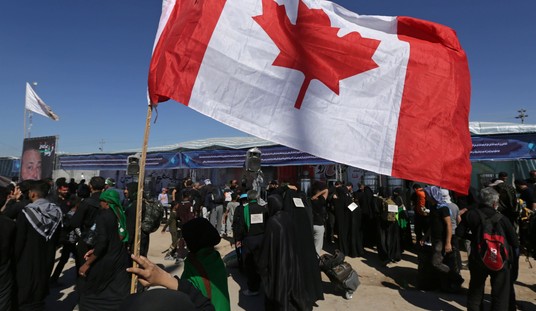By now, everyone knows that Mitt Romney and the RNC raised a whole lot of online cash in the immediate aftermath of the Supreme Court decision on ObamaCare. How did they make it happen? The big campaign haul came in part from the decision itself, but Team Romney’s early decisions on organizing and preparation for fighting the online battle put the campaign and the RNC in position to capture lightning in a bottle when it struck. I spoke with Leonard Alcivar and Zac Moffatt, two key members of the Romney campaign’s digital efforts, to get some background on the story.
With the general-election campaign in full operation, it’s sometimes difficult to remember that Romney only wrapped up the nomination two months ago. At the time, the entire Romney campaign effort consisted of 87 people. In contrast, the Obama campaign had been in general-election mode for over a year at that point and employed over 700 people, many of which were dedicated to handling Team Obama’s digital efforts in-house, Moffatt told me. Today, Moffatt estimates the campaign staff to be between 350-400, with 80 dedicated to managing digital issues, including state-based personnel. In order to ramp up quickly and efficiently for general election effort, Team Romney relied on building relationships with outside providers for key digital services, including donation processing — a decision that would pay dividends when the court’s decision prompted an avalanche of both visitors and especially donors.
The court’s decision itself sparked considerable traffic and donations, with the Romney campaign raising roughly what they’d see in online donations in a day within the first hour. Naturally, a great deal of interest erupted in Mitt Romney’s expected statement on the decision, and Alcivar says that conservative activists reached out to campaign yesterday to tell the campaign what they wanted to hear from Romney: a passionate commitment to full repeal and an articulation of how ObamaCare erodes freedom and damages the economy. Romney delivered with this four-minute speech:
The campaign also released this web video as part of their fast response effort:
http://www.youtube.com/watch?v=8MgiQ9KZdqg&feature=player_embedded
At that point, what had been a flood of traffic on the campaign and RNC websites turned into a deluge. Within an hour, the campaign had to expand their infrastructure from eight servers to 24 in order to keep the donation pages running — a contingency that might only happen once in a campaign, but for which Team Romney had prepared from the beginning. Traffic increased to five times what the sites would normally experience, but more critically, donations exploded to something close to twenty times their normal rate. The infrastructure decisions made two months ago played a critical role in keeping up with demand. As Moffatt explained, normal web-page hits don’t put a lot of stress on servers, but the secure donation transactions require many times more in server resources. Donor pages had three to four thousand simultaneous transactions at times in the rush following Romney’s statement, and the sites stayed up to take advantage of them all.
In the end, the Romney and RNC campaign websites had 200,000 unique visitors in the 24-hour period following the Supreme Court decision — with 47,000 donations. That’s a conversion rate of nearly 25%, far above the normal rate for campaigns. The success wasn’t limited to just the campaign websites, either. Obama has a 5-year head start on Facebook, and has 27 million followers already, while Romney had 2.1 million before the court decision. Despite that, Team Romney beat Team Obama on Facebook “engagements” in the first 24 hours after the decision, 493,400 to 464,000, when Obama supporters had more to celebrate. Romney picked up three times as many supporters in the period as well, 28,713 to 9,600.
Moffatt, who quarterbacked the digital efforts this week, says that this shows not just how Team Romney’s preparation and organization succeeded, but how Romney himself engaged the conservative outrage over the court’s ObamaCare decision, and how conservatives embraced the campaign as an outlet for it. That is exactly what Moffatt envisaged when the campaign shifted its focus from the primary to the fight against Barack Obama. Team Romney intended to “move from a campaign to a cause,” and when the Supreme Court gave them the opportunity to make that a reality, they were fully prepared to take advantage of it.
Update: I got the communication backwards on the conservative outreach yesterday; it was conservatives who reached to to Team Romney, not the other way around. I had it incorrect from my interview notes, and I’ve corrected it above.








Join the conversation as a VIP Member